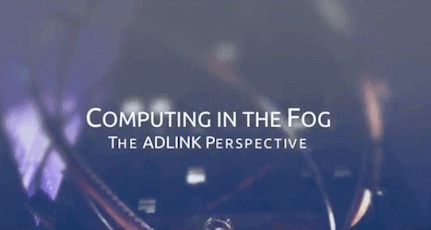Fog & Edge Computing in Networking and Telecommunications
A Conversation with Jeff Sharpe, ADLINK
In this video, Jeff Sharpe, Senior Product Manager for ADLINK, discusses the impact that fog and edge computing have on telecommunications and networking. Watch to see how adopting these technologies will help service providers to improve the quality of experience for customers and drive innovation.
Watch the first video in this series, Fog and Edge Computing: A Manufacturing Perspective, here.
Transcript
So, the operators are really looking at technologies now that enable and improve that quality of experience for their end user. They also want to make money. They’re also trying to monetize their networks and provide really value added services instead of just delivering data to that phone or to that device.
So, what we’re seeing is more of a virtualized environment for their compute power. So, a lot of the applications that we see today are now moving into what we call the cloud environment in the data center environment. Where ADLINK’s key strengths and where our focus is, is not really in the cloud but really closer to the user for edge computing. So, where we’re seeing a divergence of this technology is placing certain network elements in the cloud environment and distributed functions at the edge closer to the user to provide lower latency type applications. Video is a great example where if I can deliver that video closer to the user, versus up in the cloud, I’m not going to have that spinning wheel of death.
AB: So, you’re working with service providers. What do they need to know about opportunities or challenges with edge and fog?
JS: The operators are trying to do two things. One is, they’re optimizing their network to try to save money, and they’re also trying to offer more and more services that they’re not competing with the over top applications.
An example would be Skype. Using their network to be able to do voice over IP. YouTube type services that are transmitting videos from one point to another. The cable companies and broadcast companies, sending videos of the latest Game of Thrones series. They want to be able to make money on that. And they can do it from various different applications.
AB: The message that I got from you, if I were to try and condense it down, is the service providers want to go beyond being a pipe and having, moving other people’s value to being able to offer the value themselves.
JS: Exactly.
AB: So, I’m a service provider. It makes sense. I understand what you’re asking me to do and what benefits. Are there any things I need to worry about or be cautious about?
JS: If you look at the past, these hardware platforms, software platforms, have 15, 20 year life cycles. They want to be agile. They want to look at companies such as ADLINK, which are flexible, and their open architecture. From a telco perspective, they’re being cautious on proprietary software, proprietary hardware. They want to look at hardware as an open architecture. They’re looking at the software to be open source, open architectures. And what that does is it creates competition and it creates true value to the end user because I can deliver it much quicker.
AB: Excellent. Great. Well, thanks for joining us.
JS: Well, thank you.
AB: Appreciate it.
JS: Thank you.
Fog & Edge Computing video series
-
Vignette #1:
-
Vignette #2:Fog & Edge in Networking and Telecom
-
Vignette #3:
-
Vignette #4:
-
Vignette #5:
Connect with ADLINK
About ADLINK
ADLINK Technology is leading edge computing with solutions that drive data-to-decision applications across industries. ADLINK provides robust and reliable hardware platforms, data connectivity, and complete Industrial Internet of Things (IIoT) solutions to serve a wide variety of industries including networking, industrial automation, healthcare and defense.
Learn more at adlinktech.com.









